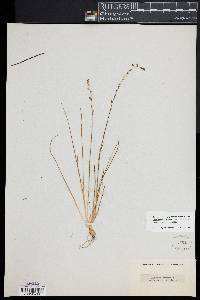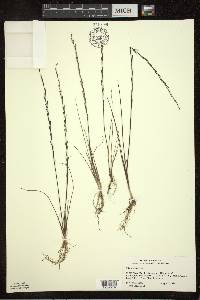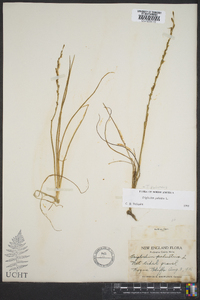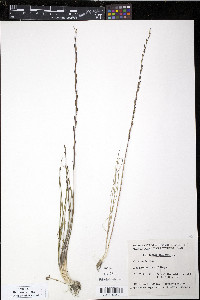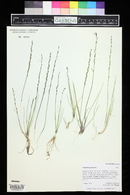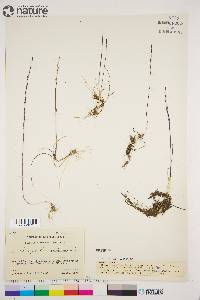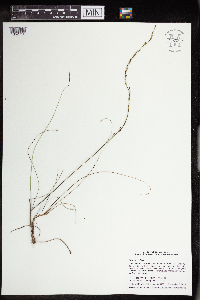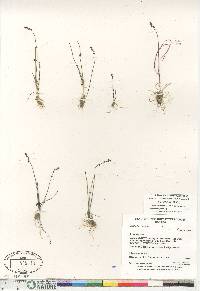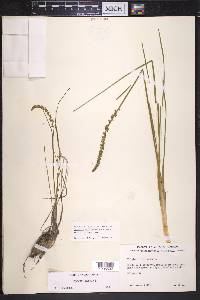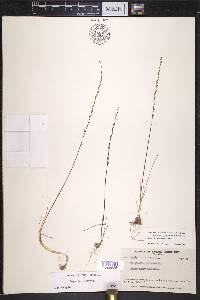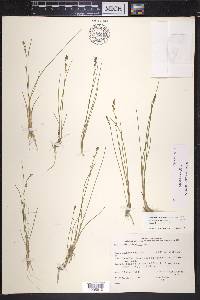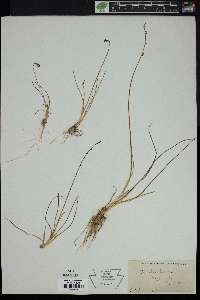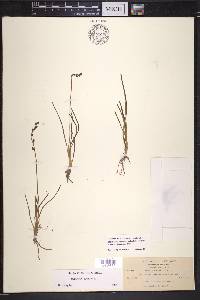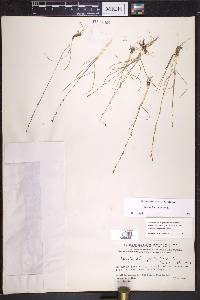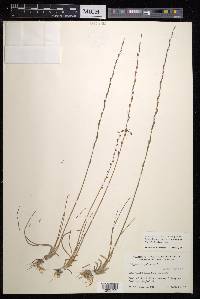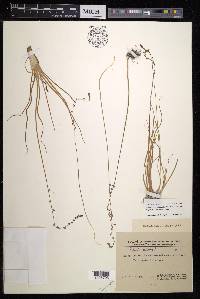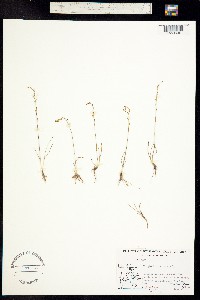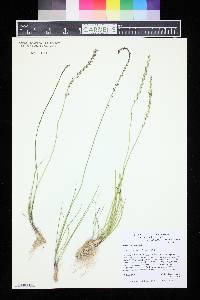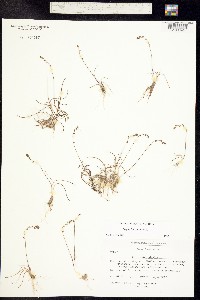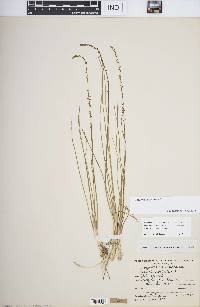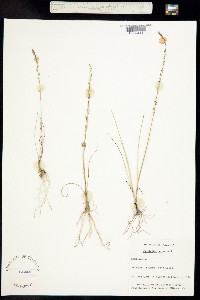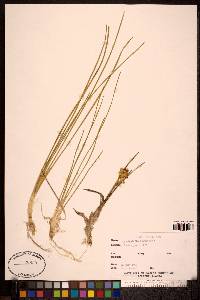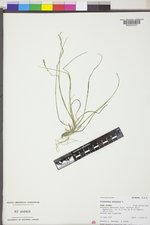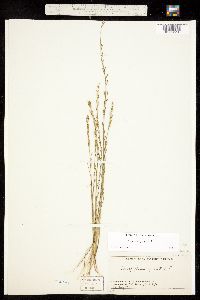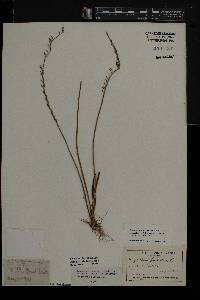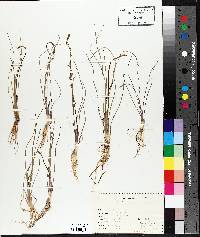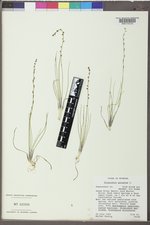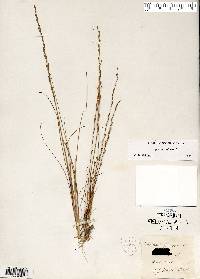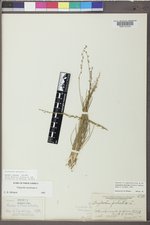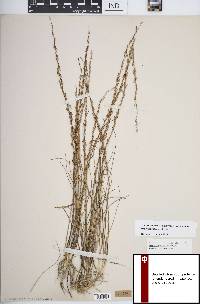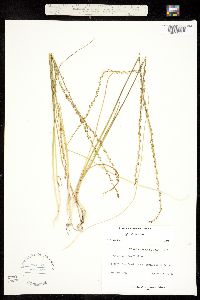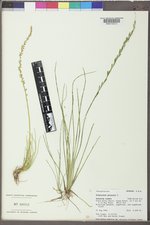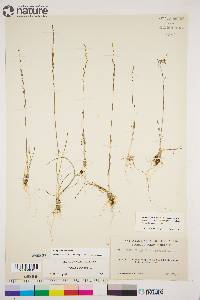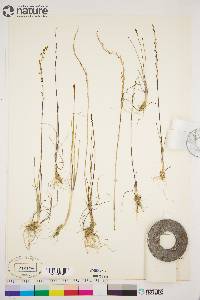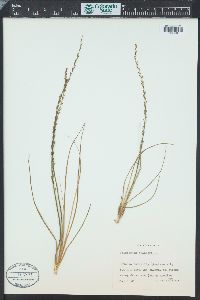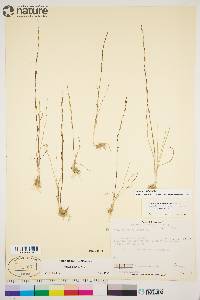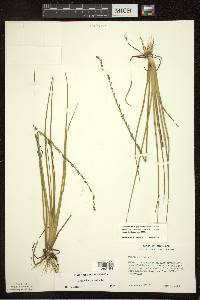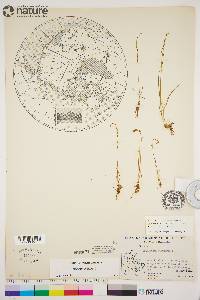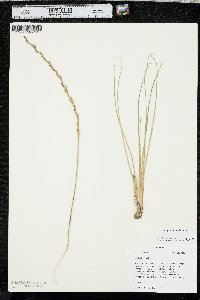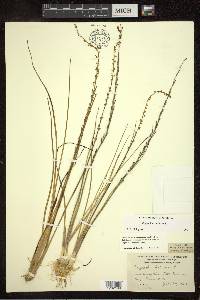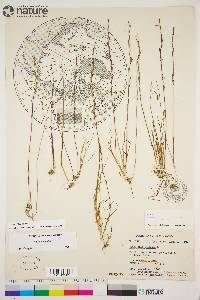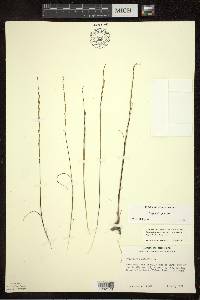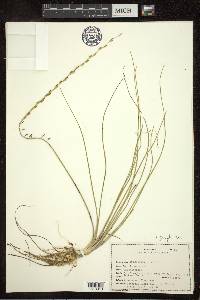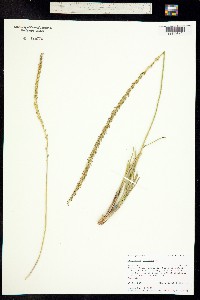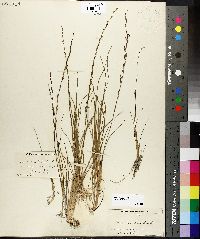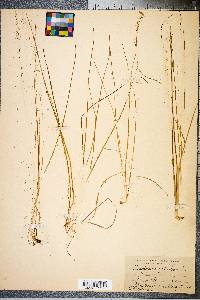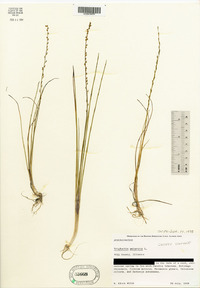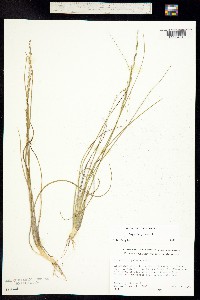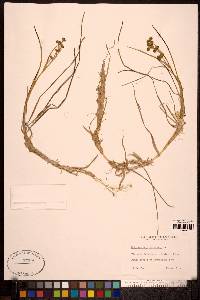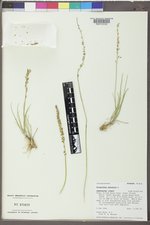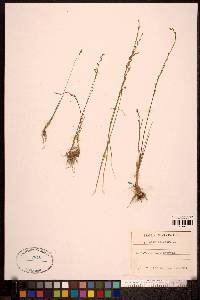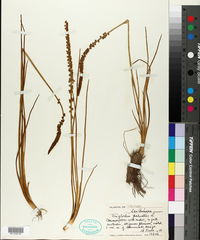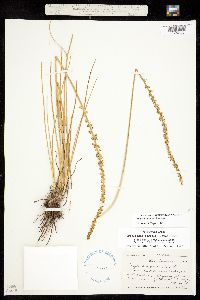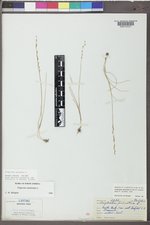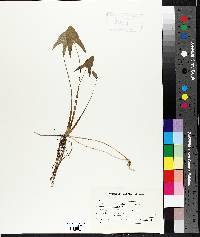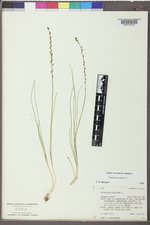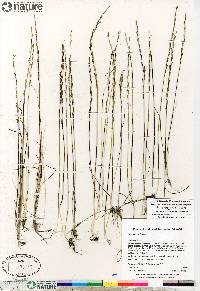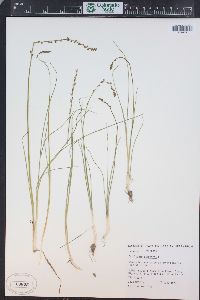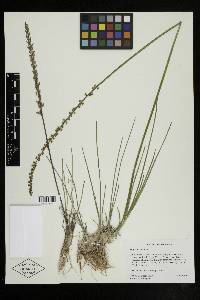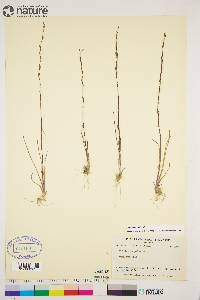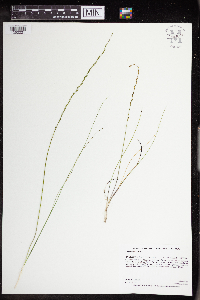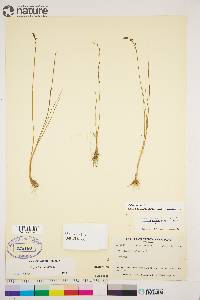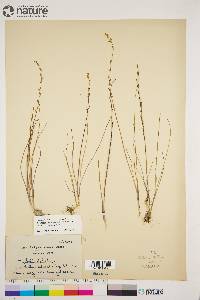
|
|
|
|
Family: Juncaginaceae
Marsh Arrow-Grass
[Triglochin palustre Schousb.] |
Plants with fibrous strands of leaves at base, 9--42.5 cm. Leaves erect from sheath, shorter than scapes, 6--24.5 cm; sheath 3.5--5 cm 1.5--5 mm, ligule not hoodlike, unlobed; blade 0.8--2.9 mm wide, apex acute. Inflorescences: scape often purple near base, mostly exceeding leaves, 5.5--27.2 cm 1--2.1 mm; racemes 5.1--21.4 cm 2--5 mm; pedicel 0.4--4.5 0.1--0.5 mm. Flowers: tepals elliptic, 1.1--1.6 0.7--0.9 mm, apex round; pistils 6, 3 fertile, 3 sterile. Fruits: fruiting receptacles with wings; schizocarps linear, 7--8.3 0.8--1.2 mm; mericarps linear, weakly ridged abaxially, 6.5--8.5 0.5--1.5 mm, beak erect, 0.3 mm. 2n = 24. Flowering summer and early fall. Coastal and mountain marsh areas and moist alkaline meadows; 0--3700 m; Greenland; St. Pierre and Miquelon; Alta., B.C., Man., N.B., Nfld. and Labr., N.W.T., N.S., Nunavut, Ont., P.E.I., Que., Sask., Yukon; Alaska, Ariz., Calif., Colo., Idaho, Ill., Ind., Iowa, Maine, Mich., Minn., Mont., Nebr., Nev., N.H., N.Mex., N.Y., N.Dak., Ohio, Oreg., Pa., R.I., S.Dak., Utah, Wash., Wis., Wyo.; Mexico; South America; Eurasia. Perennial semiaquatic herb to 40 cm tall Stem: very short, hidden by the leaves. Runners spread from the plant, bearing small bulbs. Leaves: basal, wrapped in a sheath, to 30 cm long and 2 mm wide, with an unlobed sheath tip and pointed blade tip. Flowers: borne on a terminal spike-like inflorescence with a three-winged stalk. Each flower has six pale greenish yellow tepals 1 - 1.5 mm long, three egg-shaped ovaries and three stigmas. Fruit: maturing when the ovary wall splits vertically into three single-seeded sections (schizocarp), 6 - 9 mm long, linear to club-shaped, separating from the stalk from the base upward but remaining attached at the tip, each section tapering to a sharply pointed base, essentially beakless. Similar species: The similar Triglochin maritimum does not spread by runners, is taller (to 0.8 m), has a ridged (not winged) flower stalk, and a two-lipped sheath tip. The fruit is shorter (2 - 5 mm long), egg-shaped to oblong with three to six recurved beaks, and separates into six sections. Flowering: late June to late August Habitat and ecology: Rare, but found locally in calcareous areas. Occurence in the Chicago region: native Notes: This species is less poisonous than Triglochin maritima. Etymology: Triglochin comes from the Greek words treis, meaning three, and glochis, meaning pointed. Palustre means marsh-loving. Author: The Morton Arboretum Very slender, 2-4 dm; lvs to 3 dm, 1-2 mm wide; raceme 1-2 dm, the very slender pedicels strictly erect; tep 6, 1-1.5 mm; stamens 6; ovaries 3, ovoid, in fr- linear-clavate, 6-9 mm, at maturity parting from the axis from the base upward, remaining attached at the summit, the base very sharply pointed; axis broadly 3-winged, the wings extending between the carpels; 2n=24. Brackish marshes along the coast, and in bogs inland; circumboreal, in Amer. s. to Pa., Ind., Io., Nebr., and N.M. May-July. Gleason, Henry A. & Cronquist, Arthur J. 1991. Manual of vascular plants of northeastern United States and adjacent Canada. lxxv + 910 pp. ©The New York Botanical Garden. All rights reserved. Used by permission. From Flora of Indiana (1940) by Charles C. Deam Very local in marly springy areas on marly shores of lakes in our northern counties and in a marly springy place in Henry County. …… Indiana Coefficient of Conservatism: C = 10 Wetland Indicator Status: OBL |
This project was made possible in part by the Institute of Museum and Library Services [MG-70-19-0057-19].
Powered by Symbiota


